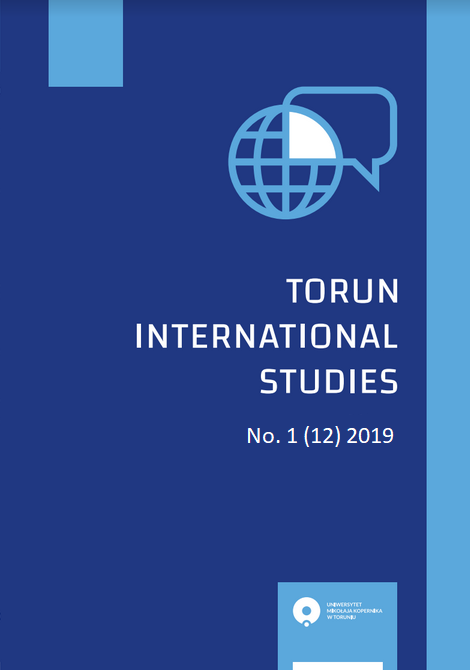SEARCHING COMMON EUROPEAN STANDARDS REGARDING BLASPHEMY? ANALYSIS OF ITALIAN, IRISH, AUSTRIAN REGULATION FROM THE LIGHT OF THE ECHR
DOI:
https://doi.org/10.12775/TIS.2019.002Keywords
blasphemy, freedom of expression, freedom of religion, ECtHR, Italy, Ireland Austria, common standardAbstract
The purpose of the presented article is to resolve the issue of the existence of the common European standard regarding the blasphemous speeches and examine its efficiency for possible mechanisms of resolving the collussion between freedom of expression and freedom of religion. The presented analysis will be commenced with reference to the judicial practice of the European Court of Human Rights regarding the tension between freedom of expression and freedom of religion with addition to blasphemy. Through the prism of such analysis the author formulates hypothesis of the wide diversity between the States of the Council of Europe towards granting priority for one of the aforesaid freedoms in case of blasphemy. Secondary question refers to the influence of such diversity for the efficiency of protection of both: freedom of expression and freedom of religion. Subsequently the author will analyse the domestic regulations of Italy, Ireland and Austria to illustrate the occurring differences as well as search for optimal model of protection. The author will also refer to the statement of selected representatives of human rights doctrine. The conclusion part will focus on formulating recommendations for amplifying the efficiency of the common European standard regarding the presented issue. The author will rely mainly on legal dogmatic methodology with reference to the literal resonance of the legal regulations as well as judicial practice of the European Court of Human Rights as well as comparative analysis to unveil similarities and differences within presented States legal systems.
References
Araujo, C.D. (2009, November 23). Pakistan Pushes Irish Blasphemy Law Language At The UN. Center for Inquiry. Retrieved March 15, 2019, from https://centerforinquiry.org/blog/pakistan_pushes_irish_blasphemy_law_language_at_the_un/
Barsotti, V., Carozza, P.V., & Cartabia, M. (2015). Italian Constitutional Justice in Global Context. Oxford: Oxford University Press.
Cismas, I. (2014). Religious Actors and International Law. Oxford: Oxford University Press
Cox, N. (2000). Blasphemy and the Law in Ireland. Lewiston: Edwin Mellen Press.
End Blasphemy Laws. Retrieved March 15, 2019, from https://end-blasphemy-laws.org/countries/europe/
Erasmus. (2017, August 13). Ranking countries by their blasphemy laws. Retrieved March 15, 2019, from https://www.economist.com/erasmus/2017/08/13/ranking-co
European Commission for Democracy through Law. (2010). Blasphemy, Insult and Hatred: Finding Answers in a Democratic Society. Strasbourg: Council of Europe.
European Union Guidelines on the promotion and protection of freedom of religion or belief. (2013, June 24). Luxembourg: Council of the European Union.
Hashemi. (2008). Religious Legal Traditions, International Human Rights Law and Muslim States. Leiden-Boston: Martinus Nijhoff Publishers.
Henrard, K. (2000). Devising an Adequate System of Minority Protection: Individual Human Rights, Minority Rights and the Right to Self-Determination. The Hague, Boston, London: Martinus Nijhoff Publishers.
Howard-Hassam, R.E. (2000). Canadians Discuss Freedom of Speech: Individual Rights vs. Groups. International Journal of Minority and Group Rights, 7.
Human Rights Committee. (1994). Annual Report to the U.N. General Assembly. U.N. Doc. A/49/40 vol. 1.
Human Rights Committee. (2011). General comment No. 34. Geneva: CCPR/C/GC/34.
Kamiński, I. (2008). Glosa do wyroku Europejskiego Trybunału Praw Człowieka z dn. 25.01.2007 r., 6854/01. Europejski Przegląd Sądowy, 2, 46-51.
Kamiński, I. (2002). Swoboda wypowiedzi w orzecznictwie Europejskiego Trybunału Praw Człowieka. Warszawa: Zakamycze.
Larralde, J. M. (1997). La liberte d’expression et le blaspheme. Reuve trimestrielle des droits de l’homme.
Loprieno, D. (2015). Religion and the State. In A. Mammone, E. Giap Parini & G. A. Veltri (Eds.), The Routledge Handbook of Contemporary Italy. History, politics, socjety (pp. 145-154). London and New York: Routledge.
Marks, S. (1995). The European Convention of Human Rights and Its Democratic Society. British Yearbook of International Law, 66(1).
Monshipouri, M. (Eds.). (2011). Human Rights in the Middle East: Frameworks, Goals, and Strategies. New York: Palgrave Macmillan.
Rehman, J. (2010). International Human Rights Law. Essex: Pearson.
Skrzydło, J. (2013). Wolność słowa w orzecznictwie Sądu Najwyższego Stanów Zjednoczonych i Europejskiego Trybunału Praw Człowieka: analiza porównawcza. Toruń: Adam Marszałek.
Taylor, P.M. (2005). Freedom of Religion: UN and European Human Rights Law and Practice. Cambridge: Cambridge University Press.
Taylor, G. (2015). Austria's Law against Defamation of Religion: a Case Study. Journal of Law and Religion, 30(1).
Temperman, J., & Kotlay, A. (Eds.). (2017). Blasphemy and Freedom of Expression: Comparative, Theoretical and Historical Reflections after Charlie Hebdo Massacre. Cambridge: Cambridge University Press
U.S. Commission on International Religious Freedom. (2017). Respecting Rights?: Measuring the World's Blasphemy Laws. Retrieved 10 March 2019, from https://www.uscirf.gov/sites/default/files/Blasphemy%20Laws%20Report.pdf
Wachsmann, P. (1994). La religion contre la liberte d’expression: sur un arret regrettable de la Cour europeenne des droits de l’homme. Reuve universelle des droits de l’homme, 4(12).
Wieruszewski, R., Wyrzykowski, M., & Kondratiewa-Bryzik, E. (2012). Prawne granice wolności sumienia i wyznania. Warszawa: Monografie LEX.
Downloads
Published
How to Cite
Issue
Section
Stats
Number of views and downloads: 531
Number of citations: 0



